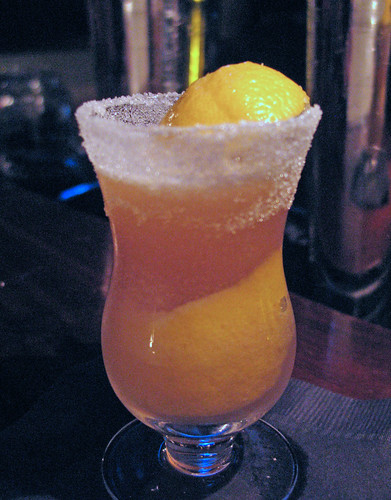Cocktail of the Day: The Jaguar
Or, the Jag-you-are, if you’re in Britain. (I kid, I kid.)
This one’s from Eastern Standard in Boston, a place where I would undoubtedly be a regular if I lived there (and who were kind enough to have the Hoskins Cocktail on their menu, meaning that to me they are made of awesome), created by Tom Schlesinger-Guidelli, one of their bartenders.
The Jaguar
(by Tom Schlesinger-Guidelli, Eastern Standard, Boston)1-1/2 ounces silver tequila.
3/4 ounce Amer Picon.
3/4 ounce green Chartreuse.
3 dashes Fee Brothers’ orange bitters.Stir with ice in a mixing glass for no less than 30 seconds. Strain into a chilled cocktail glass. Flame an orange peel over the drink, but do not garnish with the peel.
The inspiration to make this came from Paul Clarke’s post on it from a week or so ago, so you can read most of the details there. You’ll probably want to substitute the current reforumlation of Torani Amer, as it’s beautiful stuff; the old Torani Amer’s vegetal-celery notes kinda got in the way the first time I made this drink back in 2007. Jamie Boudreau’s Amer Picon replica would work well too, but if you have actual Amer Picon from France, go for it. The way the tequila works with everything here is beautiful.






